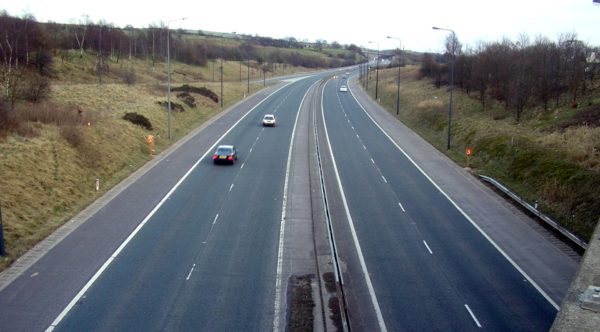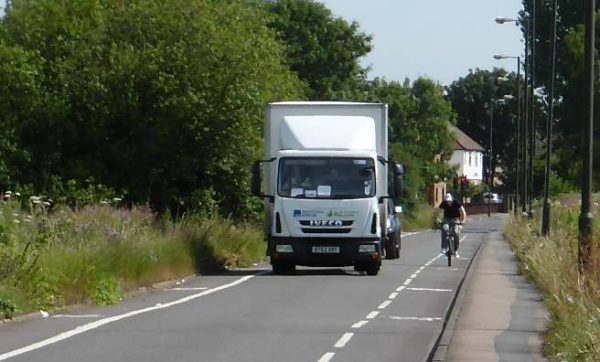Merging and lane discipline when driving
Part of what makes driving relatively safe is when other road users drive predictably. Part of being predictable is using a standard set of rules and signals when merging into traffic and when changing lanes.
Good lane discipline is partly to do with good forward planning – looking 10-12 seconds ahead so you know where you are going and how traffic conditions are unfolding.
Merging
Merging in turn (also called merging like a zip) is recommended for traffic that is moving fairly slowly, for example when you are merging onto a motorway from a slip road and the traffic is crawling.
When travelling at higher speeds, adjust your speed to the same as the traffic you are merging with, signal nice and early (at least three seconds before you need to merge) and align your vehicle with a gap in the traffic. Check over your shoulder and look in your mirrors so you cover off your blind spots. Be cautious that traffic ahead of you isn’t going to abruptly slow down or stop.
Changing lanes
The old advice of ‘mirror, signal, manoeuvre’ is still relevant. Check your mirrors and blind spots first (i.e. if you’re moving to the right, you need to take a quick glance over your shoulder – don’t rely totally on systems like blind spot monitoring.) Signal for at least three seconds, then make the move if it’s safe to do so.
Overtaking
If you’ve overtaken a vehicle, move back to the left once it’s safe, without cutting off the vehicle you’ve just overtaken.

When overtaking a cyclist, leave at least 1.5m between you and them. Even if they are in a cycle lane, it’s good to move to the right in your lane to give more of a buffer.

Choosing the correct lane
Drive in the left lane unless you are either overtaking, there’s an exit to the right, or all lanes are travelling slowly due to heavy traffic.
If you get in the wrong lane, don’t panic and don’t make sudden, unexpected moves that could cause an accident: simply go with the lane and make a u-turn or turn around when it’s safe. The same applies at roundabouts – take the exit you’re committed to, or go around again if you’re in the centre lanes.
Cutting corners
In your driving test, cutting a corner is marked as an error. There’s no excuse for cutting corners. The Highway Code says that you should not cross the centre line unless you can see the road is clear and you wish to overtake or turn off.
On roundabouts, don’t cut across areas designed for long vehicles to use due to their swept path (the difference between the path of the front wheels and rear wheels)

Driving slowly
If you have to drive slowly, stay on the left-hand side of the left lane to make it easier for other motorists to pass you. If you’re looking for a driveway or business and you’ve slowed down, remember to indicate so that other road users know what you’re doing.
Weaving and straddling lanes
Weaving within the lane and straddling lanes (when your wheels cross over into another lane) is usually because you’re either going too fast to control the car while you’re looking at hazards, or because you are not looking far enough ahead.
It’s hard to judge where your car is on the road if you are only looking a few metres ahead of it.
What to do if you make a lane discipline error in your driving test
The examiner will notice if you straddle lanes, cut a corner or make another type of error. The best thing to do is admit it straight away. It’s much worse for the examiner to know that you made a mistake and you didn’t realise it yourself, rather than you made a mistake and you acknowledge you did.
- Understanding the National Standards for Riding Mopeds and Motorcycles
- Livestock Transport Rules UK: A Complete Guide to Animal Transportation Requirements
- The Role of Safety Advisers in Dangerous Goods Transport
- Sustainable Driving: Reducing Your Environmental Impact on the Road
- Developing Effective Lesson Plans for Driver Training
- UK Agricultural Vehicle Registration and Tax Relief
- Challenges of Transporting Radioactive Materials (Class 7)
- Exemptions and support for Clean Air Zone charges
- Navigating Legal Requirements: The UK Motorcycle Licensing Rules
- Safe Transportation of Agricultural Chemicals and Hazardous Materials
- Innovations in Vehicle Construction for ADR Compliance
- Motorcycle Recovery Operations: How to Recovery a Broken Down Motorbike
- Alternative Fuels in Agricultural Vehicles
- Carriage of Dangerous Solids in Bulk Containers
- Understanding Limited Quantity Exemptions in ADR